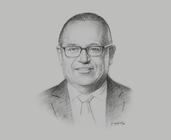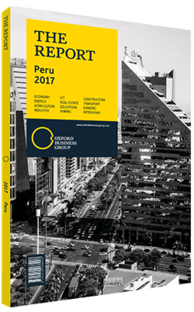Gonzalo Tamayo, Minister of Energy and Mines: Interview

Interview: Gonzalo Tamayo
To what extent do low gas prices affect the ability of the government to diversify the energy mix?
GONZALO TAMAYO: Since 2004 the Camisea Gas Project has enabled considerable diversification to take place. For instance, prior to Camisea, the electricity sector was more reliant on hydraulic energy and thermal energy based on diesel and coal. In contrast, less than 45% of today’s energy mix depends on hydraulic energy, and 40-45% is natural gas from Camisea, while around 10% of energy is taken from renewable resources or sources that use small amounts of diesel. Therefore, it is safe to state that the energy mix has already achieved a significant degree of diversification.
Furthermore, natural gas consumption has increased significantly in the areas close to the pipelines, such as Lima or Ica. This has been made possible in part by government financing of the costs associated with accessing the grid, thereby beginning on the path towards the replacement of liquefied petroleum gas by liquefied natural gas (LNG).
How important is it to renegotiate prices of Peruvian gas exports? What are the legal implications?
TAMAYO: The discussion on the need to renegotiate contracts for LNG exports is based on the current pipeline, which connects Camisea and Lima, and transports gas from fields that have been operational since 2004. The Southern Peru Gas Pipeline (Gasoducto Sur Peruano, GSP) is a new project that would be supplied by new sources. This administration is seeking to define a strategy to export natural gas from Camisea to third-party markets and to establish conditions to raise LNG exports in the regions, based on the recent arbitration awarded to Peru against the consortium of exportation It is clear that the Mexican market fundamentally depends on the Henry Hub Natural Gas Spot Price (HHNGSP), which is affected by changes in technology. However, there are alternative markets with higher spot prices. The administration is seeking a new arrangement that includes decreasing the exposure of Peruvian gas to the HHNGSP, and increasing exports to other markets. This strategy is not only backed by the arbitration award, but also by the companies involved, the Federal Electricity Commission, and instrumental discussions between President Pedro Pablo Kuczynski and Mexico’s President Enrique Peña Nieto.
What challenges need to be addressed in order to widen access to electricity? What role can the private sector play in this regard?
TAMAYO: The country has the challenge of enhancing penetration to reach 3m Peruvians who currently lack access to electricity. These citizens, who are often in remote and rural areas of the country, have not enjoyed the same level of development and growth as Peruvians living closer to the Pacific coast. Bridging gaps in the electricity sector will require the implementation of the Rural Electrification Programme, which is a major focus of this administration. The objective is to reach electricity coverage of 99% by 2021. Although it is true that in semi-rural areas there is access to electricity, there are quality deficiencies in service. Therefore, improving these gaps is also an area that this administration is paying close attention to.
In order to bring electricity to all Peruvians there is a need for more public-private partnerships. To improve the quality of service, the government requires companies to enhance their technological capabilities and make long-term investments in the electricity sector.
What role will the GSP play in the country’s natural gas landscape and its ability to extend coverage?
TAMAYO: The GSP is one of the most important projects of the current administration. It will enable the mass use of gas in southern Peru, one of the most underdeveloped areas of the country. It is an essential tool to extending coverage, and will bring a better standard of living to the less fortunate.
You have reached the limit of premium articles you can view for free.
Choose from the options below to purchase print or digital editions of our Reports. You can also purchase a website subscription giving you unlimited access to all of our Reports online for 12 months.
If you have already purchased this Report or have a website subscription, please login to continue.

